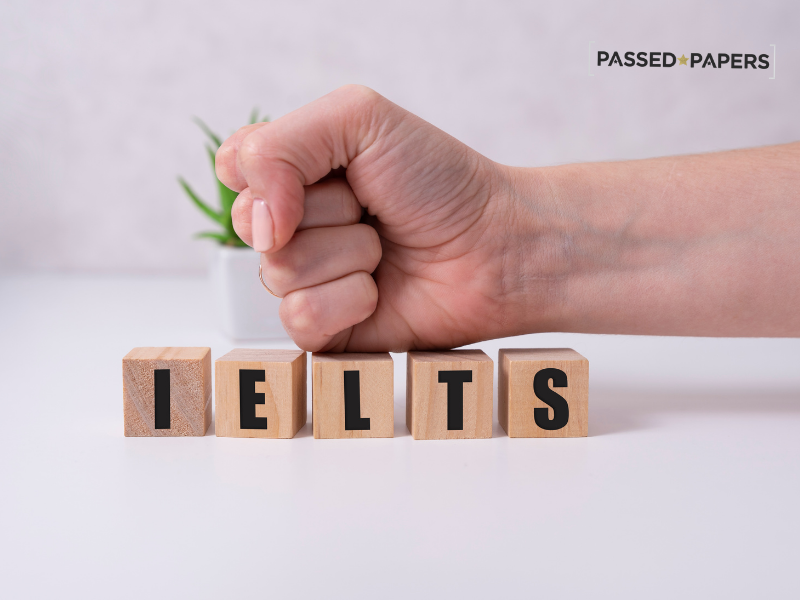Welcome to our latest guest article on Mosaic Fit’s skills focusing on IELTS English Language Skills.
IELTS Test of English Language Skills test
The IELTS (International English Language Testing System) is globally the most popular English test for higher education.
The IELTS has two main forms:
- Firstly, there is the IELTS Academic which measures if you are ready to begin studying in English.
- The IELTS or the International English language Testing System is the leading test for determining the English language skills of anyone who is migrating or for someone who is looking for higher education.
Cambridge English IELTS resources for IELTS Academic
Intro to the IELTS Academic for IELTS test-takers:
- Typically used for those wanting to study in an English-speaking environment or university (higher education).
- But it can also can be taken for professional registration purposes.
- It is very similar to the TOEFL (Test of English as a Foreign Language) required by North American universities and colleges.
- Features vocabulary that is familiar within an academic setting.
- Accepted by many professional organizations in Australia and New Zealand.
- Hence is commonly used for studying or training abroad.
IELTS test
IELTS test format
- Listening: 30 minutes (plus 10 minutes’ transfer time)
- Reading: 60 minutes
- Writing: 60 minutes
- Speaking: 11–14 minutes
The test total time is: 2 hours and 45 minutes.
Listening, Reading and Writing are completed in one sitting. The Speaking test may be taken on the same day or up to seven days before or after the other tests.
All test takers take the same Listening and Speaking tests, while the Reading and Writing tests differ depending on whether the test taker is taking the Academic or General Training versions of the test.
IELTS Listening paper
The module comprises four sections, with ten questions in each section. It takes 40 minutes: 30 – for testing, plus 10 for transferring the answers to an answer sheet.
Sections 1 and 2 are about every day, social situations.
- Section 1 has a conversation between two speakers (for example, a conversation about travel arrangements)
- Section 2 has one person speaking (for example, a speech about local facilities).
Sections 3 and 4 are about educational and training situations
- Section 3 is a conversation between two main speakers (for example, a discussion between two university students, perhaps guided by a tutor)
- Section 4 has one person speaking about an academic subject.
Each section begins with a short introduction telling the test taker about the situation and the speakers. Then they have some time to look through the questions. The questions are in the same order as the information in the recording, so the answer to the first question will be before the answer to the second question, and so on. The first three sections have a break in the middle allowing test takers to look at the remaining questions. Each section is heard only once.
IELTS test
At the end of the test students are given 10 minutes to transfer their answers to an answer sheet. Test takers will lose marks for incorrect spelling and grammar.
IELTS Reading paper
The Reading paper has three sections and texts totalling 2,150-2,750 words. There will be a variety of question types, such as multiple-choice, short-answer questions, identifying information, identifying writer’s views, labelling diagrams, completing a summary using words taken from the text and matching information/headings/features in the text/sentence endings. Test takers should be careful when writing down their answers as they will lose marks for incorrect spelling and grammar.
Texts in IELTS Academic
- Three reading texts, which come from books, journals, magazines, newspapers and online resources written for non-specialist audiences. All the topics are of general interest to students at undergraduate or postgraduate level.[20]
General Training
- Section 1 contains two or three short texts or several shorter texts, which deal with everyday topics. For example, timetables or notices – things a person would need to understand when living in an English-speaking country.
- Section 2 contains two texts, which deal with work. For example, job descriptions, contracts, training materials.
- Section 3 contains one long text about a topic of general interest. The text is generally descriptive, longer and more complex than the texts in Sections 1 and 2. The text will be taken from a newspaper, magazine, book or online resource.
IELTS Writing paper
The Writing paper has two tasks which must both be completed. In task 1 test takers write at least 150 words in about 20 minutes. In task 2 test takers write at least 250 words in about 40 minutes.
Test Academic
- Task 1: test takers describe a graph, table, chart, map, process, pie chart or diagram in their own words.
- Task 2: test takers discuss a point of view, argument or problem.
General Training
- Task 1: test takers write a letter in response to a given everyday situation. For example, writing to an accommodation officer about problems with your accommodation, writing to a new employer about problems managing your time, writing to a local newspaper about a plan to develop a local airport.
- Task 2: test takers write an essay about a topic of general interests. For example, whether smoking should be banned in public places, whether children’s leisure activities should be educational, how environmental problems can be solved.[23]
Speaking paper
The speaking test is a face-to-face interview between the test taker and an examiner. IELTS’s speaking test contains three sections.
- IELTS Speaking paper Section 1: introduction and interview (4–5 minutes).
- IELTS Speaking paper: Section 2: long turn (3–4 minutes). Test takers are given a task card about a particular topic. Test takers have one minute to prepare to talk about this topic.
- IELTS Speaking paper: Section 3: discussions (4–5 minutes). The third section involves a discussion between the examiner and the test taker, generally on questions relating to the theme which they have already spoken about in Section 2.[24] These questions usually consist of two sets of 4 or 5 questions.
How the IELTS test is scored
There is no pass or fail. Thst ee IELTS tis scored on a nine-band scale, with each band corresponding to a specified competence in English. Overall Band Scores are reported to the nearest half band.
The following rounding convention applies: if the average across the four skills ends in .25, it is rounded up to the next half band, and if it ends in .75, it is rounded up to the next whole band.
What do the IELTS Test’s 9 score bands mean?
The nine bands are described as follows:
| 9 | Expert User | Has full operational command of the language: appropriate, accurate and fluent with complete understanding. |
| 8 | Very Good User | Has fully operational command of the language with only occasional unsystematic inaccuracies and inappropriacies. Misunderstandings may occur in unfamiliar situations. Handles complex detailed argumentation well. |
| 7 | Good User | Has operational command of the language, though with occasional inaccuracies, inappropriateness and misunderstandings in some situations. Generally handles complex language well and understands detailed reasoning. |
| 6 | Competent User | Has generally effective command of the language despite some inaccuracies, inappropriacies and misunderstandings. Can use and understand fairly complex language, particularly in familiar situations. |
| 5 | Modest user | Has partial command of the language, coping with overall meaning in most situations, though is likely to make many mistakes. Should be able to handle basic communication in own field. |
| 4 | Limited User | Basic competence is limited to familiar situations. Has frequent problems in understanding and expression. Is not able to use complex language. |
| 3 | Extremely Limited User | Conveys and understands only general meaning in very familiar situations. Frequent breakdowns in communication occur. |
| 2 | Intermittent User | No real communication is possible except for the most basic information using isolated words or short formulae in familiar situations and to meet immediate needs. Has great difficulty understanding spoken and written English. |
| 1 | Non User | Essentially has no ability to use the language beyond possibly a few isolated words. |
| 0 | Did not attempt the test | No assessable information provided. |
General Training
- Suitable for those applying to study below degree level. This includes an English-speaking school or college.
- If you want to move to an English-speaking country to study, then you should take the IELTS Academic test.
IELTS test practice
Free IELTS exam preparation
Here are the best free IELTS Preparation 1 exam preparation materials: Practice IELTS Online – 1
- The 4 modules at the level of the actual IELTS exam.
- Guidance on how to approach each different task type.
- Variety of authentic reading texts cover the range of text types found in the actual exam.
- Explanations and model answers for all writing tasks.
Here are the best free IELTS Preparation 2 exam preparation materials: Practice IELTS Online – 2
- Helping you to understand the IELTS test format and…
- To get to know the different question formats.
This IELTS practise online above and others listed below:
- Provide extensive practise in the 4 modules at the level of the actual IELTS exam.
- Offer free practice materials for all major exam task types, this section provides guidance on how to approach each different task type.
- A variety of authentic reading texts cover the range of text types found in the actual exam.
- The answer key includes explanations as to why answers are correct.
- Model answers for all writing tasks

